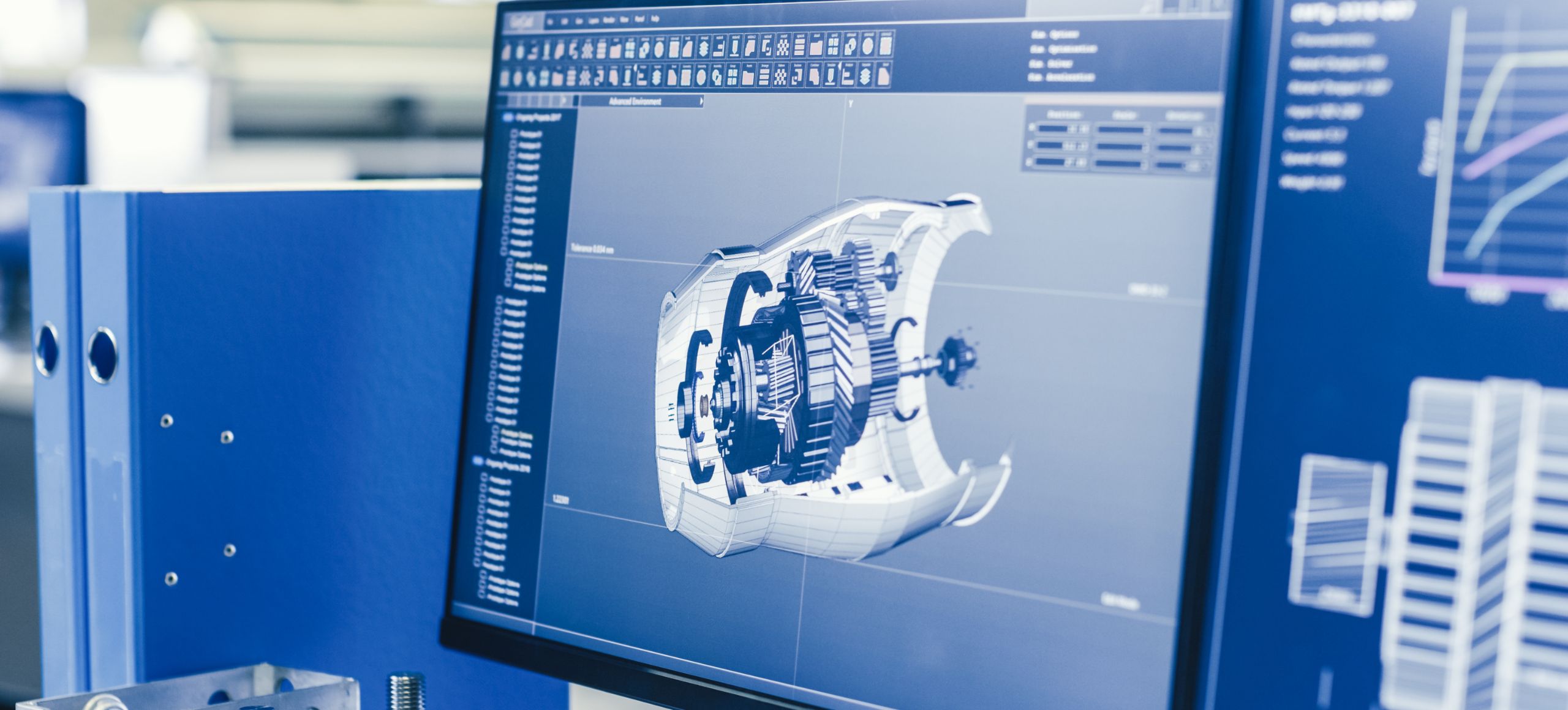In the ever-evolving field of engineering, 3D CAD (Computer-Aided Design) technology stands as a pivotal innovation. 3D CAD enables engineers and designers to create, modify, analyse, and optimise designs with unprecedented precision and efficiency. By creating digital models in three dimensions, this technology facilitates a deeper understanding of design intricacies, leading to better decision-making and innovative solutions.
The shipbuilding industry has particularly benefitted from the advancements in 3D CAD. Traditional shipbuilding methods were often cumbersome and error-prone, relying heavily on 2D drawings and physical prototypes. With the advent of 3D CAD, the industry has seen remarkable improvements in design accuracy, efficiency, and collaboration. These advancements have not only reduced costs but have also enhanced the overall quality and performance of ships.
Historical Context
Initially, shipbuilders relied on hand-drawn blueprints, which were time-consuming and prone to errors. The introduction of 2D CAD in the latter half of the 20th century marked a significant leap, enabling more precise and quicker designs. However, it was the transition to 3D CAD that truly revolutionised the industry. This shift allowed for the creation of detailed and comprehensive digital models, offering a more accurate representation of the final product.
Key milestones in CAD development have played a crucial role in its adoption in shipbuilding. The 1980s saw the introduction of 3D CAD systems, which allowed for more complex and precise designs. The 1990s and 2000s brought about advancements in computational power and software capabilities, enabling real-time simulations and analyses. Today, modern 3D CAD tools integrate seamlessly with other technologies such as Product Lifecycle Management (PLM) systems, further enhancing their utility in shipbuilding.
Benefits of 3D CAD in Shipbuilding
Enhanced Design Accuracy
Detailed Modelling: One of the most significant advantages of 3D CAD is the ability to create highly detailed and accurate models of ships. This precision allows for the meticulous planning and execution of every component, ensuring that the final product meets exact specifications.
Error Reduction: With 3D CAD, the risk of design errors and inconsistencies is greatly diminished. The software’s ability to automatically check for clashes and interferences between components reduces the likelihood of costly mistakes and rework during the construction phase.
Improved Collaboration
Shared Digital Models: 3D CAD facilitates better communication and collaboration among design teams, engineers, and stakeholders. Shared digital models ensure that everyone involved has access to the most up-to-date information, promoting transparency and consistency throughout the project.
Integration with Other Technologies: The integration of 3D CAD with other digital tools, such as PLM systems, further enhances collaboration. These integrations allow for the seamless exchange of information, improving the overall efficiency and effectiveness of the design and engineering processes.
Efficiency and Speed
Faster Design: 3D CAD significantly speeds up the design process by enabling rapid iterations and modifications. Designers can quickly test and refine ideas, leading to faster development cycles and reduced time to market.
Automated Processes: Many 3D CAD tools offer automation features for repetitive tasks, such as component placement and structural analysis. This automation not only saves time but also reduces the potential for human error, further improving the efficiency of the design process.
Visualisation and Simulation
Realistic Rendering: 3D CAD allows for the creation of realistic visualisations, providing a better understanding and presentation of the final product. These renderings can be used for marketing, client presentations, and design reviews, ensuring that all stakeholders have a clear and accurate representation of the project.
Simulation and Testing: Virtual simulations enabled by 3D CAD allow engineers to test the performance of designs under various conditions. This capability helps identify potential issues early in the design phase, reducing the risk of costly modifications later on.
Cost Savings
Material Optimisation: 3D CAD enables the efficient use of materials through precise design and analysis. By optimising material usage, shipbuilders can reduce waste and lower overall production costs.
Reduced Prototyping Costs: The detailed digital models created by 3D CAD reduce the need for physical prototypes, leading to significant cost savings. Fewer prototypes mean less rework and faster project completion, ultimately lowering the overall cost of shipbuilding.
Key Features of 3D CAD Software
Parametric Modelling
Parametric modelling is a feature of 3D CAD that allows for the definition of design parameters and relationships. Changes to one part of the model automatically update related components, ensuring consistency and saving time. In shipbuilding, parametric modelling is used to create flexible and adaptable designs. For example, changing the dimensions of a ship’s hull will automatically adjust related components such as bulkheads and decks, ensuring that all parts fit together correctly.
Assembly Modelling
Complex Assemblies: 3D CAD software excels at creating and managing large assemblies, which are typical in shipbuilding projects. This capability allows for the precise coordination of all components, ensuring that the final product meets all specifications.
Interference Checking: Automatic interference checking is a crucial feature of 3D CAD. This tool ensures that all components fit together without clashes, reducing the risk of errors and rework during the construction phase.
Documentation and Drawing Generation
Automated Drawings: 3D CAD software can generate 2D drawings and documentation directly from 3D models. This automation saves time and ensures that all drawings are accurate and up-to-date.
BOM Creation: Creating accurate Bills of Materials (BOM) is essential for procurement and manufacturing. 3D CAD software automates the BOM creation process, ensuring that all necessary components are accounted for and correctly specified.
Industry-Used 3D CAD Software
Several 3D CAD software options are widely used in the shipbuilding industry, each offering unique features and capabilities tailored to different design needs. SolidWorks is known for its robust tools for parametric modelling, assembly management, and simulation, making it a popular choice. AutoCAD is another widely utilised software, valued for its versatility and ease of use, particularly in creating detailed 2D and 3D drawings. CATIA stands out for its advanced surface modelling and design capabilities, which are beneficial for complex ship designs. Siemens NX offers comprehensive solutions, including advanced simulation and integrated product lifecycle management (PLM) tools. The choice of software often depends on the specific requirements of the shipbuilding project and the preferences of the design team, with each tool providing distinct advantages to enhance the shipbuilding design and engineering process.
In the job market, many employers look for candidates with experience in one or more of these leading 3D CAD software platforms. Proficiency in these tools is often a key requirement for design positions, as it ensures that new hires can quickly contribute to ongoing projects and maintain the high standards of precision and efficiency that the industry demands.
Overcoming Challenges
Implementing 3D CAD can present several challenges, including resistance to change, software costs, and data management issues. Addressing these challenges requires a strategic approach and careful planning.
Successful implementation strategies include phased rollouts, pilot projects, and comprehensive training programs. Engaging stakeholders early in the process and addressing their concerns can also help mitigate resistance to change. Additionally, investing in robust data management solutions ensures that all design information is accurate and easily accessible.
Future Trends
Advancements in 3D CAD
Artificial Intelligence (AI) and Machine Learning (ML) are set to revolutionise 3D CAD by enhancing design capabilities and automating complex tasks. AI can assist in optimising designs, predicting potential issues, and suggesting improvements, making the design process more efficient and innovative.
Cloud-based CAD solutions offer significant benefits for collaboration and data management. These solutions allow design teams to access and share models in real-time, regardless of their location, fostering greater collaboration and efficiency.
Integration with Emerging Technologies
Virtual Reality (VR) and Augmented Reality (AR) are increasingly being used for immersive design reviews and training. These technologies provide a more interactive and engaging way to visualise and interact with 3D models, enhancing understanding and decision-making.
The integration of 3D CAD with Internet of Things (IoT) technology and digital twins allows for real-time monitoring and analysis of ship operations. By connecting 3D CAD models with live data from sensors and other devices, shipbuilders can gain valuable insights into performance and maintenance needs, improving the overall efficiency and longevity of ships.
3D CAD has revolutionised the shipbuilding industry by enhancing design accuracy, improving collaboration, and reducing costs. The benefits of 3D CAD, including faster design iterations, realistic visualisations, and advanced simulations, make it an indispensable tool for modern shipbuilders. As the technology continues to evolve, incorporating AI, cloud-based solutions, and emerging technologies like VR, AR, and IoT, the future of shipbuilding looks promising.
For shipbuilding professionals looking to advance their careers or find new opportunities, we invite you to visit our Marine People jobs board for UK and International vacancies. Embrace the power of 3D CAD and be part of the future of shipbuilding design and engineering.
For more industry updates, tips, and maritime content, navigate to our blog page.








